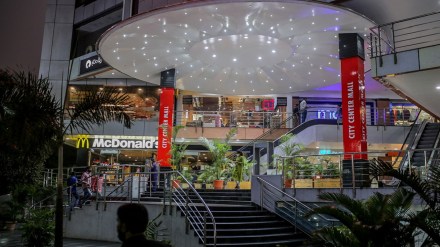As the pandemic ebbs, online retail may not suffice to satiate customers’ needs, and other factors would continue to draw in-store shoppers, said a report. Outing, experience and leisure are becoming critical factors needed to balance the retail equation, consultancy firm CBRE said in its report ‘The Retail Perspective on Experience and its Impact on Real Estate’. The retail industry, in the new normal, is witnessing growing footfalls across retail and recreational spaces, and physical retail formats with experience, leisure and entertainment are pulling in-store shoppers, it said. The growth in offline retail is courtesy the pent-up demand, even as online shopping continued to perform strongly.
Retail Sector’s robust recovery in Q2 2022
Growth in transaction activity, according to CBRE Q2 market monitor:
>100 per cent quarter-on-quarter in 2nd quarter April-June
>160 per cent year-on-year in 1st half January-June
Experiential retail is the new buzzword
Brands are resizing and calibrating physical store strategies to diversify portfolio and expand footprint. H1 2022 saw more than 500 per cent increase in project completions compared to a year ago, the report said, with experience being a critical factor driving how retail spaces were designed. This change and growing focus on ‘experience’ is counterbalancing the prevalence of online retail and is ensuring profitability.
Talking about the impact of experiential factors on real estate in retail, Anshuman Magazine, Chairman & CEO – India, South-East Asia, Middle East & Africa, CBRE, said, “Physical retail locations must evolve into places where people want to go rather than have to go if they are to succeed in the future. It is imperative to deliberate on how real estate stakeholders can improve their spaces to enhance the experience quotient and subsequently value.”
Ram Chandnani, Managing Director, Advisory & Transactions Services, CBRE India, added, “CBRE suggests a multi-pronged approach – this consists of diversification of store formats and functions, leveraging data science to develop customized location strategies based on the catchment, repurposing existing stores, creating a personalized experience, and developing fruitful partnerships. Moving forward, embracing digitization to amalgamate traditional retail will be imperative.”
What can real estate developers offer?
With rising demand for more dynamic and flexible leases by retailers, CBRE talked about strategies that can be adopted by real estate developers to address the need. Retail brands are looking for more dynamic and flexible leases. This is driven by the demand for plug-and-play retail outlets, which is more popular among small and independent firms. Further, showrooms with personalized designs are becoming popular that can enable the retail brands to construct ‘stories’ or ‘journeys’ around their stores, said the report.
Strategies that can facilitate offering consumer experience:
Evolution of thematic design: To attract footfalls with a compelling visual experience through building architecture, art installations, and other décor.
Offering real estate as a service: Developers can also consider the real estate-as-a-service (REaaS) approach, which combines strategy, technology, and data to deliver digital and physical services – not just space – to tenants and users.
Placemaking: The malls of tomorrow would need to be less transactional, more inventive, inclusive and committed to creating something unique for shoppers. Placemaking can drive value for an asset by adding more F&B and entertainment-focused tenants in a Gen Z-dominated catchment area.
